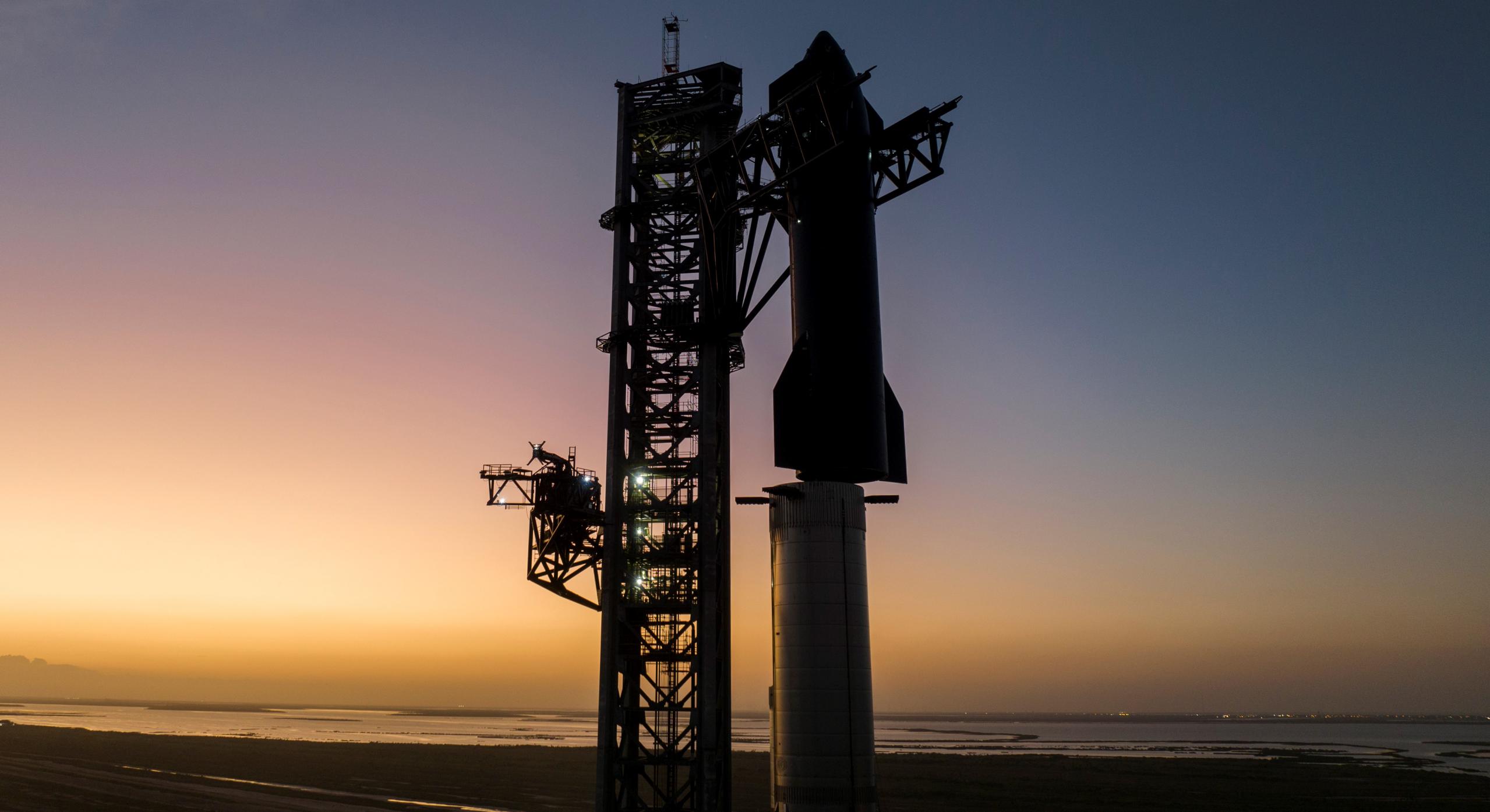
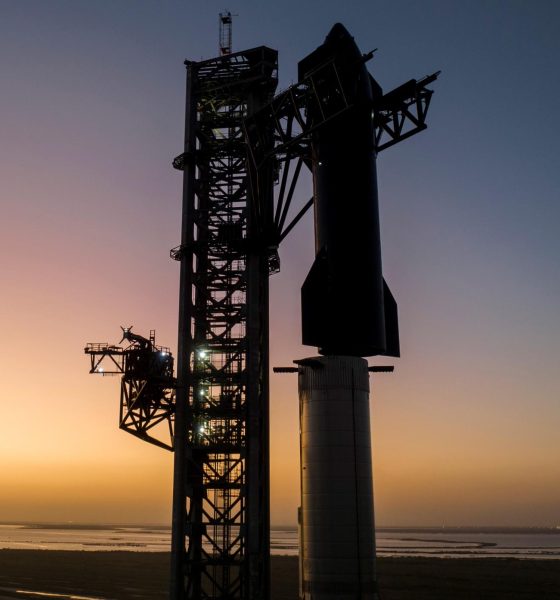
News
SpaceX fully stacks Starship rocket for the first time in six months
For the first time in more than six months, SpaceX has stacked both stages of its next-generation Starship rocket, creating the largest and most powerful launch vehicle ever fully assembled.
It’s not the first time. SpaceX has conducted three other ‘full-stack’ Starship demonstrations: once in August 2021 and again in February and March 2022. But earlier this year, SpaceX (or at least CEO Elon Musk) decided to give up on the Starship upper stage and Super Heavy booster prototypes that had supported all three of those prior tests and, at one point, been considered a candidate for the rocket’s first orbital launch attempt. Booster 4 and Ship 20 were consigned to a retirement yard by June 2022.
By then, SpaceX had already begun testing the new favorites for Starship’s orbital launch debut: Super Heavy Booster 7 (B7) and Starship 24 (S24). Almost exactly six months after the start of that busy period of testing, both prototypes recently reached the point where SpaceX was confident enough in their progress to combine the two for the most challenging phase of Starship testing yet.
After an aborted predawn attempt on October 11th, SpaceX technicians worked out some mystery kinks in crucial infrastructure located at Starship’s first (nearly) finished orbital launch pad in Boca Chica, Texas. As part of a cart-before-horse gamble made by CEO Elon Musk that has seen SpaceX entirely remove legs from all recent Starship and Super Heavy prototypes in the hope that it will one day be able to catch the building-sized rocket stages out of mid-air, the company has built a launch tower ~145 meters (~475 ft) tall and outfitted it with three giant robotic arms. Two of those arms are identical and linked together, forming a sort of claw that could one day close around hovering rockets to preclude the need for landing legs. A simpler third arm swings in and out to connect Starship’s upper stage to the launch pad’s power, propellant, and gas supplies.
The ‘chopsticks,’ as they’re known, have another even more important purpose: assembling Starship rockets at the launch pad. Thanks to their sturdy connection to a tower with a foundation sunk deep into the Boca Chica wetlands and a design that forgoes a hanging hook or jig for giant arms, they are far less sensitive to winds than the immense crane otherwise required to stack Starship on top of Super Heavy. Sitting a stone’s throw from the Gulf of Mexico, storms and high winds are not exactly uncommon.
Around sunset on October 11th, SpaceX had better luck on its third attempt and was able to move the arms into place under Ship 24. Weighing 100 tons or more (~220,000+ lb) and measuring nine meters (~30 ft) wide and ~50 meters (~165 ft) tall, the Starship was then slowly lifted about 80 meters (~250 ft) off the ground, translated over to Booster 7, and lowered on top of the 69-meter-tall (~225 ft) first stage. After about two more hours of robotically tweaking their positions, the two Starship stages were finally secured together. With the arms still attached to Ship 24, SpaceX workers were able to approach the rocket and prepare to connect the swing arm’s quick-disconnect umbilical to Starship.
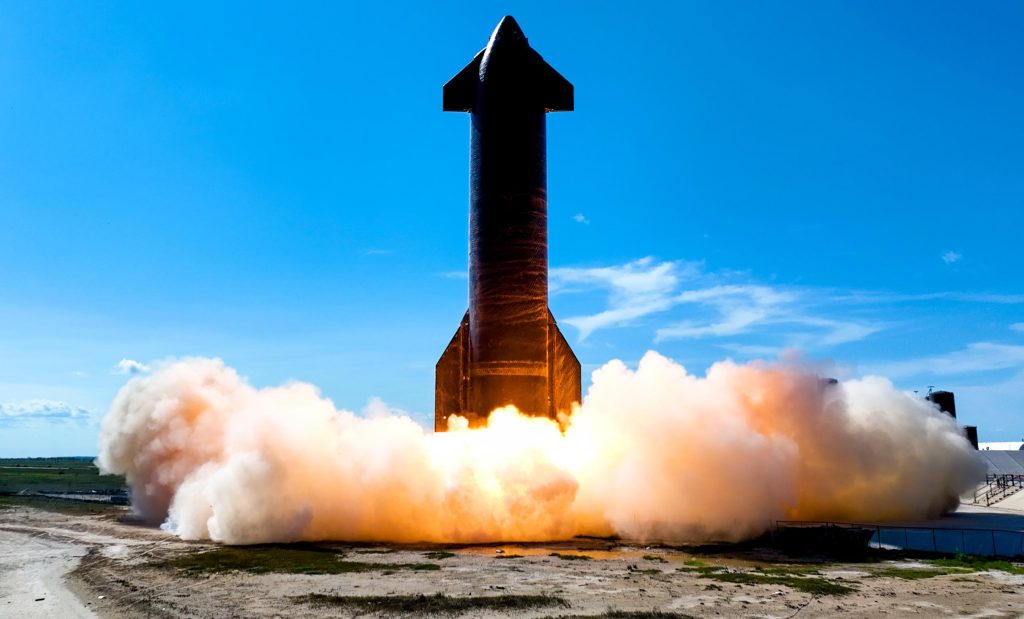
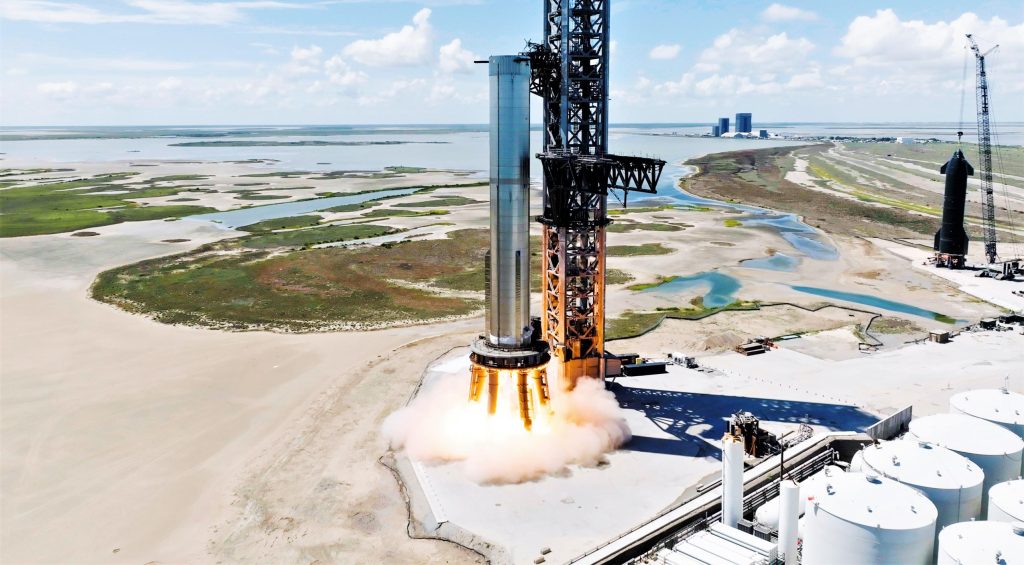
Since they began qualification testing in April and May 2022, Booster 7 and Ship 24 have each completed several cryogenic proof tests, eight ‘spin-primes’ of some or all of their Raptor engines, and several static fires of those same engines. Most recently, Ship 24 ignited all six of its Raptors, but the seemingly successful September 8th test was followed by more than a month of apparent repairs. Booster 7 last completed a static fire that ignited a record seven of its 33 Raptor engines – offering an idea of how much further SpaceX still has to go to finish testing the Super Heavy.
According to CEO Elon Musk, Booster 7 and Ship 24 will attempt Starship’s first full-stack wet dress rehearsal (WDR) once all is in order. The prototypes will be simultaneously loaded with around 5000 tons (~11M lb) of liquid oxygen and methane propellant and then run through a launch countdown. Diverging just before ignition and liftoff, a WDR is meant to be more or less identical to a launch attempt.
If the wet dress rehearsal goes to plan, SpaceX will then attempt to simultaneously ignite all 33 of the Raptor engines installed on Super Heavy B7, almost certainly making it the most powerful liquid rocket ever tested. Even if all 33 engines never reach more than 60% of their maximum thrust of 230 tons (~510,000 lbf), they will likely break the Soviet N-1 rocket’s record of 4500 tons of thrust (~10M lbf) at sea level. It would also be the most rocket engines ever simultaneously ignited on one vehicle. SpaceX will be pushing the envelope by several measures, and success is far from guaranteed.
It’s unclear if SpaceX will immediately attempt a full wet dress rehearsal or 33-engine static fire. Based on the history of Ship 24 and Booster 7 testing, it would be a departure from the norm if the company doesn’t slowly build up to both major milestones with smaller tests in the interim. At minimum, assuming WDR testing is completed without major issue, SpaceX will likely attempt at least one or more interim static fires with fewer than 33 engines before attempting the first full test.
If both milestones (a full WDR and 33-engine static fire) are completed without significant issue, there’s a chance that SpaceX could move directly into preparations for Starship’s first orbital launch attempt without unstacking the rocket. In the likelier scenario that some issues arise and some repairs are required, the path will be more circuitous but should still end in an orbital launch attempt late this year or early next.
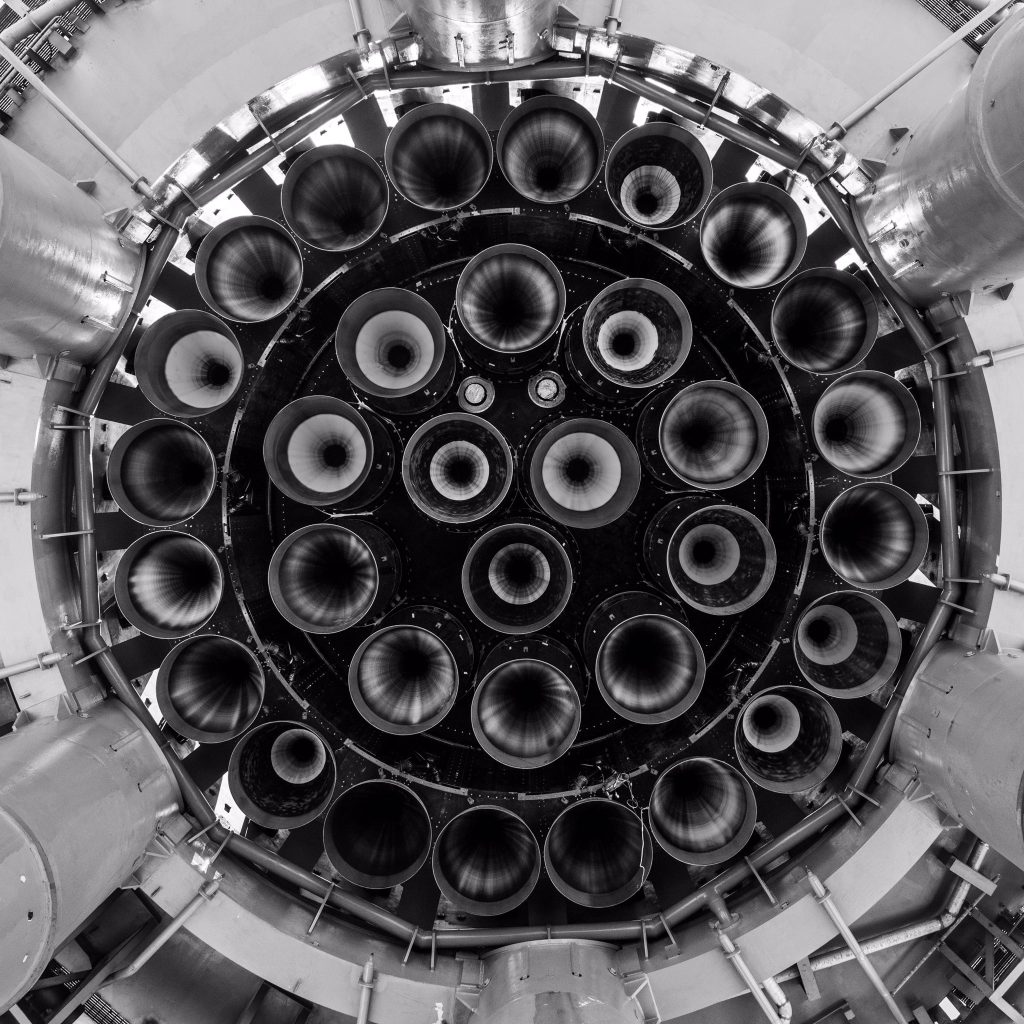
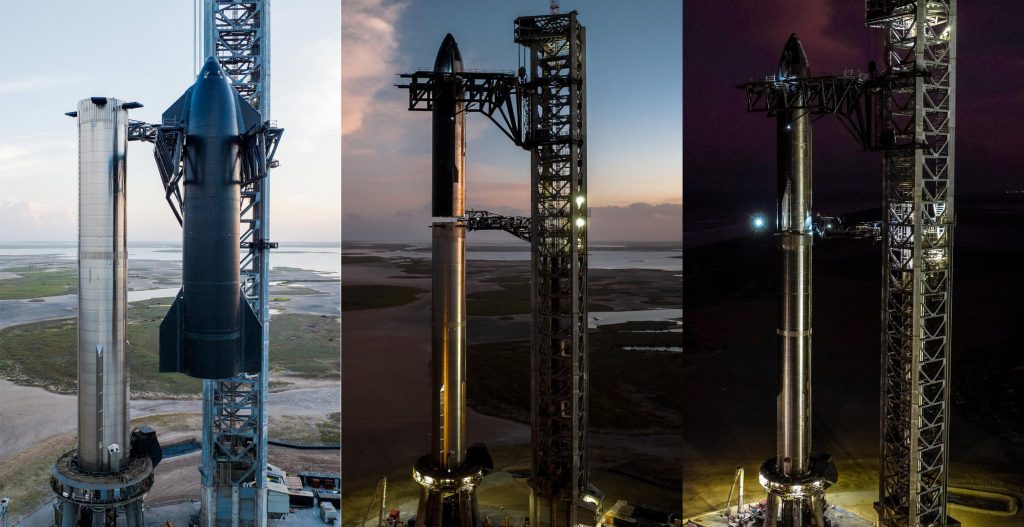

News
Tesla Model Y Standard stuns in new range test, besting its Premium siblings
Tesla’s newer vehicles have continued to meet or exceed their EPA estimates. This is a drastic change, as every 2018-2023 model year Tesla that Edmunds assessed did not meet its range estimates.

The Tesla Model Y Standard stunned in a new range test performed by automotive media outlet Edmunds, besting all of its Premium siblings that are more expensive and more luxurious in terms of features.
Testing showed the Model Y Standard exceeded its EPA-estimated range rating of 321 miles, as Edmunds said it is the “longest-range Model Y that we’ve ever put on our loop.” In the past, some vehicles have come up short in comparison with EPA ranges; for example, the Model Y’s previous generation vehicle had an EPA-estimated range of 330 miles, but only drove 310.
Additionally, the Launch Series Model Y, the first configuration to be built in the “Juniper” program, landed perfectly on the EPA’s range estimates at 327 miles.
It was also more efficient than Premium offerings, as it utilized just 22.8 kWh to go 100 miles. The Launch Series used 26.8 kWh to travel the same distance.
It is tested using Edmunds’ traditional EV range testing procedure, which follows a strict route of 60 percent city and 40 percent highway driving. The average speed throughout the trip is 40 MPH, and the car is required to stay within 5 MPH of all posted speed limits.
Each car is also put in its most efficient drive setting, and the climate is kept on auto at 72 degrees.
“All of this most accurately represents the real-world driving that owners do day to day,” the publication says.
With this procedure, testing is as consistent as it can get. Of course, there are other factors, like temperature and traffic density. However, one thing is important to note: Tesla’s newer vehicles have continued to meet or exceed their EPA estimates. This is a drastic change, as every 2018-2023 model year Tesla that Edmunds assessed did not meet its range estimates.
Tesla Model Y Standard vs. Tesla Model Y Premium
Tesla’s two Model Y levels both offer a great option for whichever fits your budget. However, when you sit in both cars, you will notice distinct differences between them.
The Premium definitely has a more luxurious feel, while the Standard is stripped of many of the more premium features, like Vegan Leather Interior, acoustic-lined glass, and a better sound system.
You can read our full review of the Model Y Standard below:
Tesla Model Y Standard Full Review: Is it worth the lower price?
News
Xpeng CEO: Tesla FSD 14.2 has developed “near-Level 4” performance
While acknowledging that imperfections remain, the Xpeng CEO said FSD’s current iteration significantly surpasses last year’s capabilities.

Xpeng CEO He Xiaopeng has offered fresh praise for Tesla’s Full Self-Driving (FSD) system after revisiting Silicon Valley more than a year after his first hands-on experience.
Following extended test drives of Tesla vehicles running the latest FSD software, He stated that the system has made major strides, reinforcing his view that Tesla’s approach to autonomy is indeed the proper path towards autonomy.
Tesla FSD closing in on Level 4 driving
During his visit, He test-drove a Tesla equipped with FSD V14.2. He also rode in a Tesla Robotaxi. Over roughly five hours of driving across Silicon Valley and San Francisco, He said both vehicles delivered consistent and reassuring performance, a notable improvement from his experience a year earlier.
According to He, Tesla’s FSD has evolved from a smooth Level 2 advanced driver assistance system into what he described as a “near-Level 4” experience in terms of capabilities. While acknowledging that imperfections remain, the Xpeng CEO said FSD’s current iteration significantly surpasses last year’s capabilities. He also reiterated his belief that Tesla’s strategy of using the same autonomous software and hardware architecture across private vehicles and robotaxis is the right long-term approach, allowing users to bypass intermediate autonomy stages and move closer to Level 4 functionality.
He previously tested Tesla’s FSD V12.3.6 and Waymo vehicles in California in mid-2024, noting at the time that Waymo performed better in dense urban environments like San Francisco, while Tesla excelled in Silicon Valley and on highways.
Xpeng’s ambitious autonomy roadmap and internal challenge
The Silicon Valley visit also served as a benchmark for Xpeng’s own autonomy ambitions. He stated that Xpeng is looking to improve its VLA autonomous driving system to match the performance of Tesla’s FSD V14.2 within China by August 30, 2026. Xpeng is poised to release its VLA 2.0 smart driving software next quarter, though He cautioned that the initial version will not be able to match FSD V14.2’s capabilities, as noted in a CNEV Post report.
He also added a personal twist to the goal, publicly challenging Xpeng’s autonomous driving team. If the performance target is met by the 2026 deadline, the CEO stated that he will approve the creation of a Chinese-style cafeteria for Xpeng’s Silicon Valley team. If not, Liu Xianming, head of Xpeng’s autonomous driving unit, has pledged to run naked across the Golden Gate Bridge, He noted.
News
Another Tesla Model 3 variant sold out for January 2026 in China
A look at Tesla China’s order page shows that new Model 3 LR RWD orders now have an estimated delivery date of February 2026.
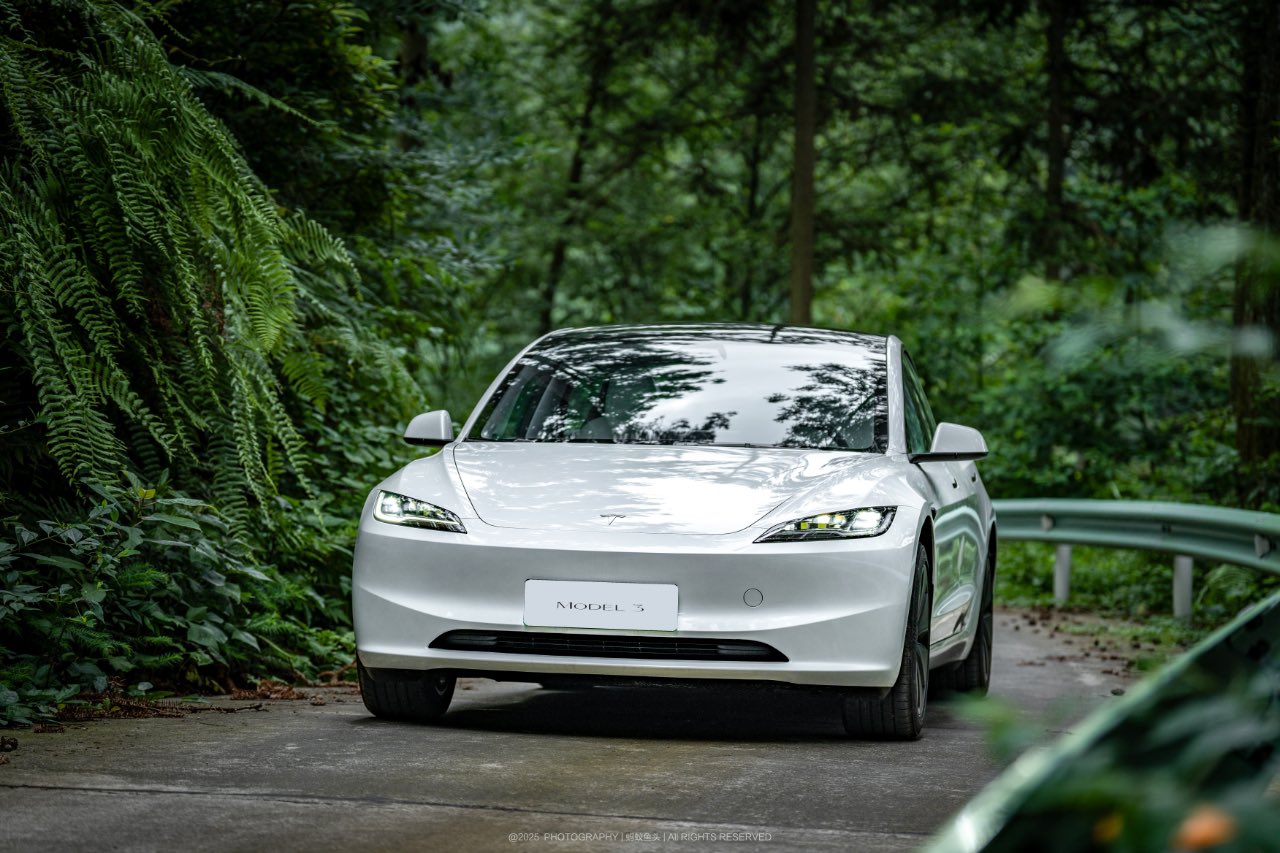
Another Tesla Model 3 variant in China appears to have sold out for January 2026, with the vehicle now showing an estimated delivery date of February 2026 for new orders. This bodes well for the all-electric sedan, which has maintained notable sales despite more affordable rivals like the Xiaomi SU7 and its crossover sibling, the Model Y.
Model 3 LR RWD joins February 2026 queue
A look at Tesla China’s order page for the all-electric sedan shows that new Model 3 Long Range Rear Wheel Drive orders now have an estimated delivery date of February 2026. Priced from RMB 259,500 ($36,810), the LR RWD sits as the second-lowest-priced trim in Tesla China’s four-variant Model 3 lineup. The move follows a similar delivery timeframe for the Model 3 Performance, which remains the most expensive option for the vehicle, as noted in a CNEV Post report.
The estimated delivery dates of the two remaining Model 3 variants remain unchanged for now. The base RWD version, starting at RMB 235,500, and the LR AWD variant, priced from RMB 285,500, both continue to list estimated delivery times of 4-6 weeks. Tesla China, for its part, has continued to list in-stock Model 3 vehicles and is actively encouraging buyers to select inventory units for delivery before the end of the year.
Model Y delays and policy shifts
Delivery timelines for the Model Y in China are also stretching into 2026. All customized Model Y variants now show February 2026 as their estimated delivery date, except for the entry-level version, which still lists January 2026. Tesla has been urging customers since November to prioritize purchasing inventory vehicles, a push aimed at maximizing year-end deliveries.
Timing matters for Chinese buyers due to upcoming changes in government incentives. China’s new energy vehicle purchase tax exemption will be scaled back in 2026, which means customers who take delivery next year could face higher tax costs compared to those who are able to receive vehicles before the end of the year.
As per data from the China Passenger Car Association, Tesla recorded retail sales of 73,145 vehicles in November, down 0.47% year over year. From January through November, Tesla’s retail sales in China totaled 531,855 units, a 7.37% year-over-year drop.








